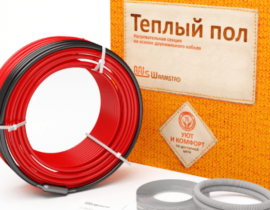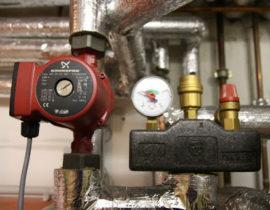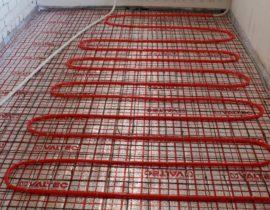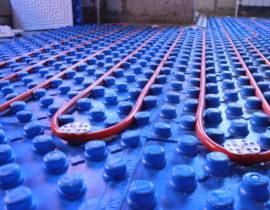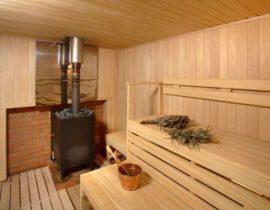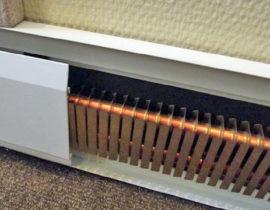The thermostat for underfloor heating is a special device that can control the degree of heating of the room, providing a comfortable microclimate and reducing energy costs. To achieve high-quality functioning of the device, it is important to correctly select it and follow the installation rules.
Content
Purpose and principle of operation of the thermostat
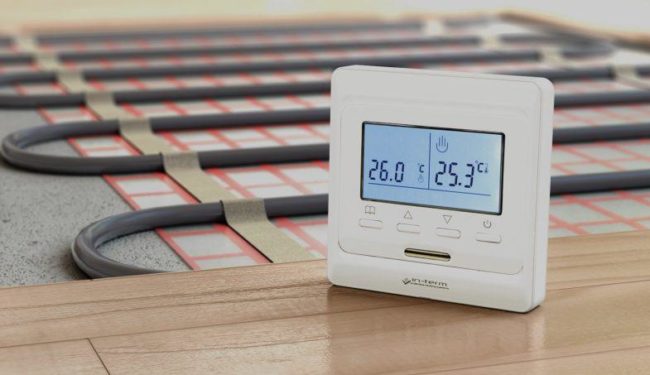
Thermostat for underfloor heating
The main purpose of installing a thermostat is to control the heating of a warm floor in order to achieve optimal performance. The amount of electricity consumption also depends on the functionality of this device.
The device consists of an adjusting device and sensors, the information from which is taken into account when turning on and off the heat mats. Thanks to the operation of the thermostat, an even temperature is maintained in the premises and energy consumption is minimized.
The principle of operation of the device depends on the underfloor heating system:
- in water, it regulates the volume of coolant entering the system;
- in electric, it regulates the power of the current and the operating time of the heating elements.
Thermostats are easy to use.Their mode of operation can be changed at your own discretion, even several times a day, without fear of breakage or premature failure of the equipment. The minimum temperature can be set separately for each room. Some models allow pre-programming the operating mode of the device at different times of the day.
Types of thermostats
The classification of all thermostats is based on the principle of controlling and configuring these devices. Each variety has some advantages and disadvantages.
Mechanical
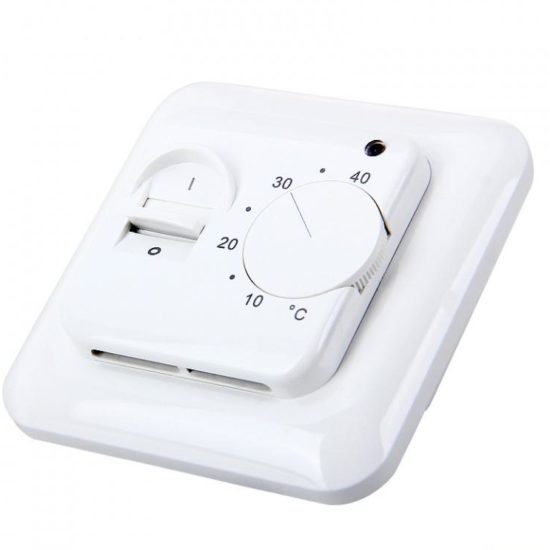
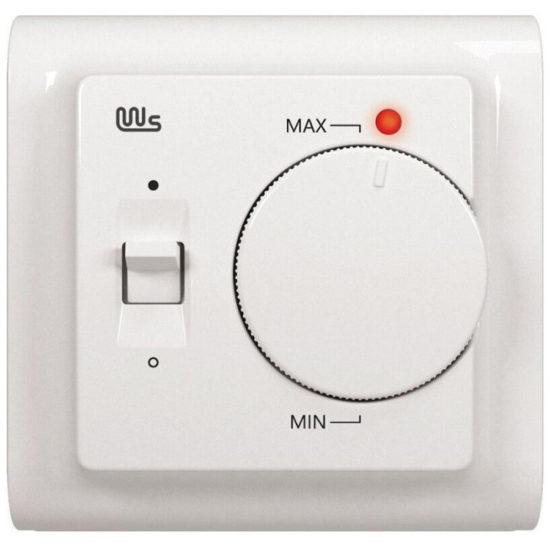
The device is easy to set up and operate without electrical components. The function of the temperature sensor in it is usually performed by a bimetallic plate. When cold, it closes the contacts of the heating mats. When the temperature in the room rises, it bends and disconnects the electrical circuit, as a result, floor heating stops.
The adjustment of the mechanical device is carried out with a wheel, by rotating which you can adjust the temperature. Despite their simplicity, mechanical thermostats are firmly established in the market.
It has a number of advantages and disadvantages:
- low price.
- ease of operation.
- ability to work at low temperatures.
- reliability;
- independence from voltage drops;
- long service life;
- automatic switching on after a power outage.
- minimal functionality;
- lack of remote control;
- large error in tinctures;
- the presence of sufficiently loud clicks when bending the bimetallic plate.
Electronic
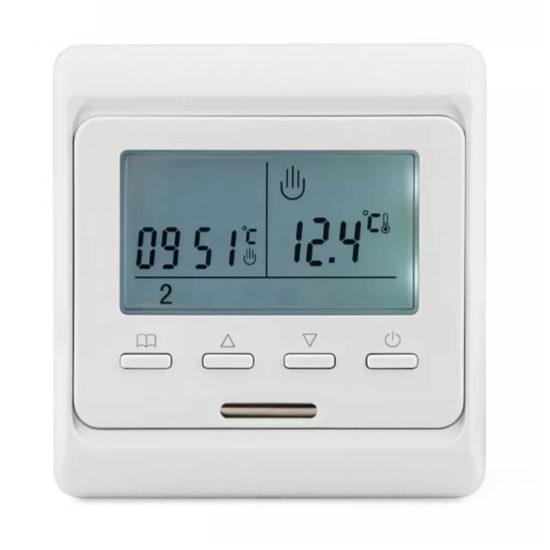
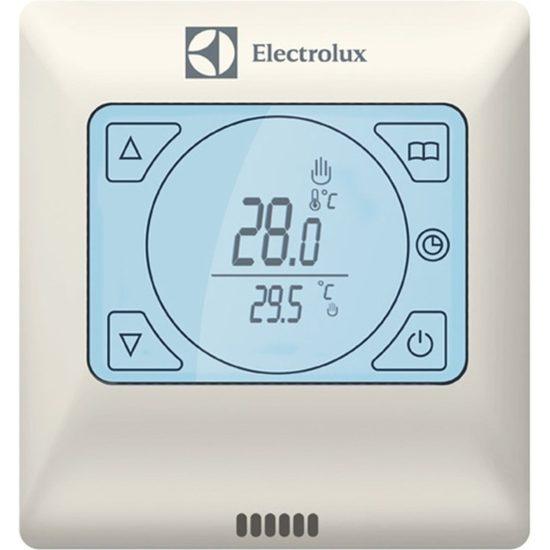
This type of thermostat is similar to mechanical types in terms of the principle of operation and functionality. The device is equipped with a digital display (on which the indicators are reflected) and a temperature sensor for the warm floor and air. The parameters are set manually.The user can control the temperature with an accuracy of 0.5 degrees.
Device advantages and disadvantages:
- flexible regulatory program;
- the presence of a remote control;
- the ability to connect to other control systems.
- high cost and complexity of self-regulation.
Programmable

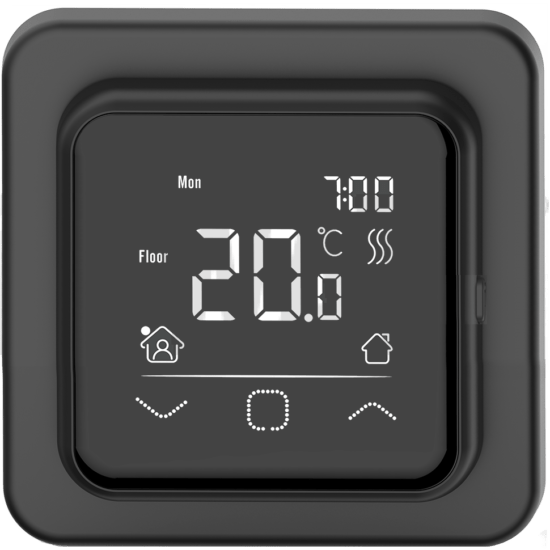
The main difference between programmable thermostats and conventional electronic ones is the extended functionality of the control microcircuit. This device can be programmed to turn on at a certain time of the day, set several heating modes on it: minimum, optimal and economical.
In modern programmable models, the function of remote control from a smartphone via Wi-Fi may be provided. Some manufacturers of thermostats release their own applications for smartphones, by installing which you can configure the equipment from your gadget.
The disadvantages of this instrument include the high cost and complexity of settings in the absence of skills in handling equipment. Otherwise, the pros and cons of programmable thermostats are the same as conventional electronic ones.
In electronic and programmable temperature controllers, internal components can be separated into two blocks: main and mobile. Electrical cables are suitable for the main box and wired temperature sensors are connected. It can be placed anywhere in the room, making it easy to install.
The battery powered mobile unit is used as a remote control. It can be placed on a table or hung on a wall. Additionally, external temperature sensors can be installed in the consoles to measure the ambient air temperature. Such devices are convenient in that they allow you to hide the adjustment mechanism from children.
Criterias of choice

What is important to know when choosing a thermostat for underfloor heating
When buying a thermostat, you need to know certain nuances. This will allow you to pay only for the necessary functions, as well as ensure the durability of the heating system and the device itself.
When choosing, you can focus on the following parameters:
- For installation in small rooms, it is advisable to choose an inexpensive mechanical or electronic thermostat with an internal air temperature sensor.
- It is rational to buy a programmable thermostat if you need multi-zone temperature control, as well as to save energy in the daily absence of residents of the house during the daytime.
- The temperature controller should correspond to the maximum power of the heating elements with a margin of 25-30% in case of operation at reduced voltage and will extend the life of the device.
- For houses with wooden trim, only overhead thermostat boxes are suitable.
- When choosing the type of device, you should proceed from your preferences, design features of the premises and financial capabilities.
To match the flooring, you need to consider 2 more parameters:
- Installation method: surface or embedded.
- Type of power supply: for a water floor, the device will last up to 3 Amp, for an electric one - 16 Amp.
When choosing a thermostat, evaluate the quality of the plastic case. If the manufacturer saves on this, one can doubt the reliability of the internal components of the device.
The best models of thermostats
Manufacturers offer customers a wide selection of thermostats of various types, functionality and price categories. According to the reviews of users and experts among them, you can choose the highest quality reliable models for them.
Teplolux TR 520
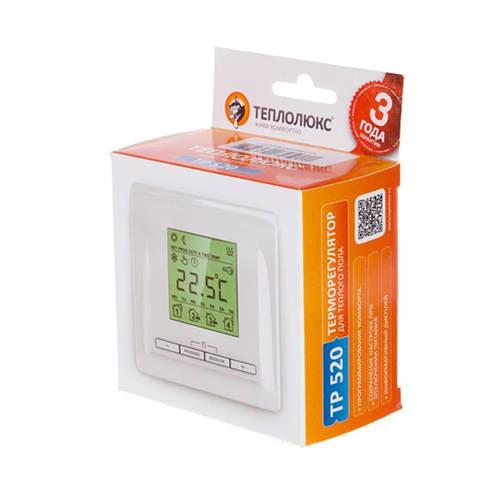
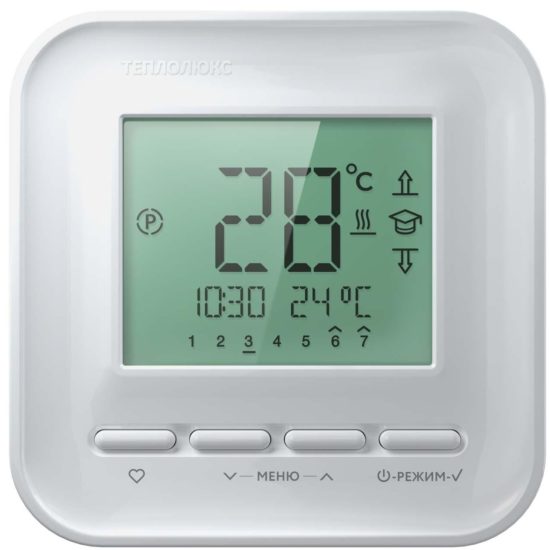
Electronic programmable model.Inexpensive and easy-to-use thermostat for electric and water heated floors. It has a graphic display, which reflects the selected programs, and the degree of heating in the room for a given minute.
The temperature sensor and user-friendly interface makes it easy to set up. The main characteristics of the device:
- the minimum temperature level is 5 degrees, the maximum is 35;
- power - 3500 W;
- communication current - 16 A;
- warranty period - 3 years.
Advantages of the model and disadvantages:
- low price;
- beautiful display;
- the ability to adjust the heating level for any day;
- anti-freeze mode;
- the availability of air temperature control.
- after disconnection, it is necessary to reconfigure.
National Comfort 711
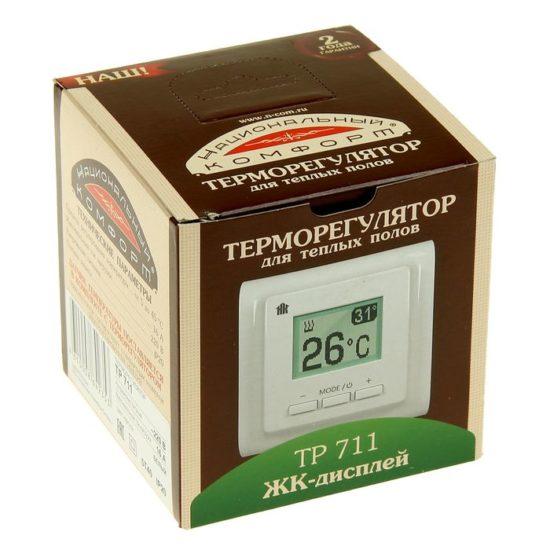
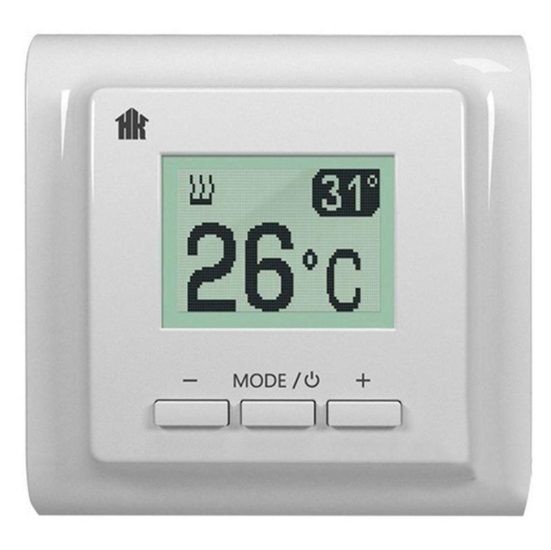
Inexpensive model of a rich configuration. The set includes a floor and air temperature sensor, a large backlit graphic display. The regulator has a self-diagnosis function, its results are displayed on the screen.
The warranty period of the device is 1 year. The device allows you to save up to 30% of the resource.
The disadvantage of the model is low protection, so choosing this device for a bathroom or shower is not recommended. There may also be problems when pressing the buttons, because they are not located very well.
Varmel RTC 70.26

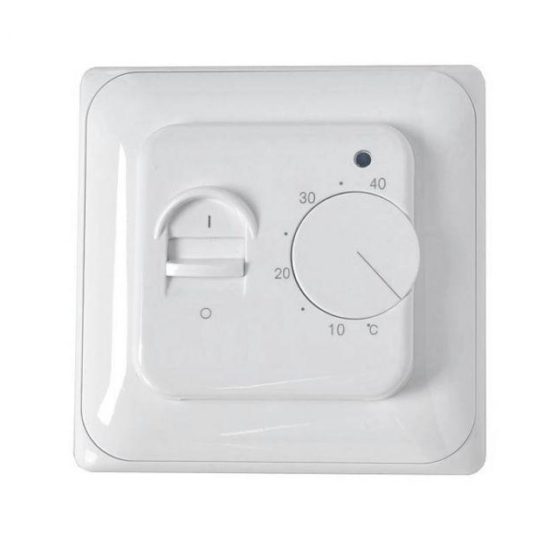
Electronic wired mechanical thermostat for electrical and water systems. Operates at a minimum temperature of 5 degrees, maximum - 40. Permissible load level - 3600 watts. Warranty - 1 year. Installation is carried out in a mounting box.
Advantages and disadvantages:
- Convenient on/off buttons
- the presence of a remote type sensor with a wire of 3 meters.
- produces a clicking sound when switched.
Thermo Thermoreg TI-200

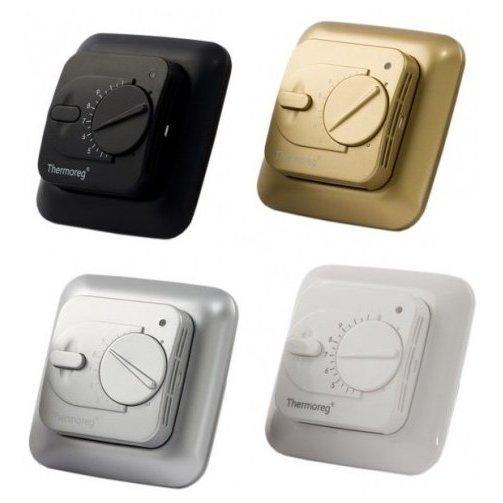
A simple and cheap mechanical type device. This is a cheap device with an indicator and a temperature sensor.With it, you can accurately adjust the desired level of heating and maintain it. The heating indicator is set on a scale, and the presence of a two-pole switch makes it easy to turn off the regulator.
Working temperature from 5 to 40 degrees. The maximum load is 3600 W. Guaranteed service life of 3 years.
Model pros and cons:
- Compactness;
- low cost;
- ease of management;
- the presence of the anti-freeze function.
- the inability to adjust the heating by day of the week, the lack of a display.
Terneo SX
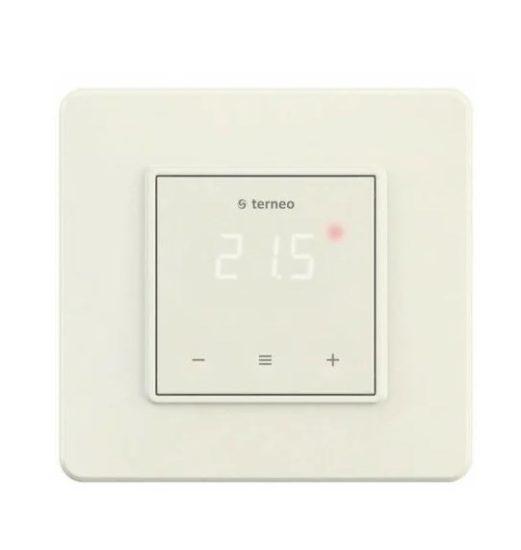
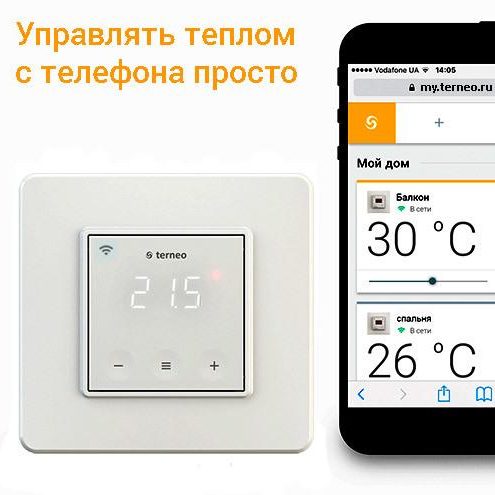
"Smart" thermostat equipped with a touch panel and temperature sensors. It is chosen when remote control is required, as it can be controlled via a smartphone. The interface is simple, making it easy to set up. It is possible to adjust the hysteresis to reduce the number of switching on and off. Installation is simple - it is installed in a metal box on the wall.
Terneo SX has a number of useful features:
- timer;
- protection from children;
- departure mode.
Main characteristics:
- temperature level from +5 to +45;
- thermostat power 3000 W;
- warranty period - 3 years.
The advantages include low price, ease of operation, quick screen response to touch, the ability to track statistical data on work and electricity consumption.
Disadvantages - difficult connection to a smartphone, low-quality plastic.
SpyHeat ETL-308B
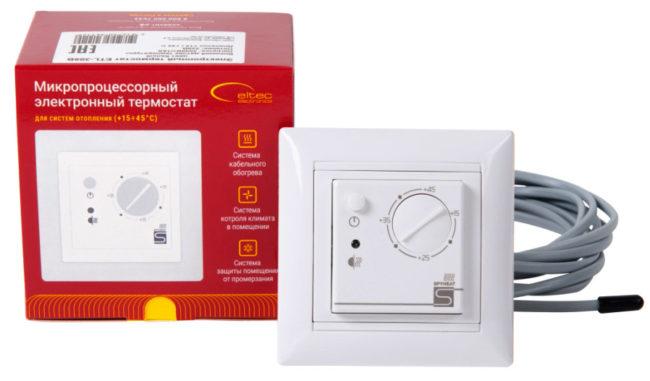
SpyHeat ETL-308B
Compact mechanical model, easy to operate, high quality, but inexpensive. It has a pleasant appearance, works for a long time without interruption. The body is equipped with a temperature switch, indicator. The setting is made by turning the switch.
Model characteristics:
- the minimum temperature is 15 degrees, the upper aisle is 35;
- maximum power - 3600 W;
- there is a temperature sensor;
- service life - 2 years.
The disadvantage is a possible clicking sound at the moment the heating relay is activated.
Rexant R70XT

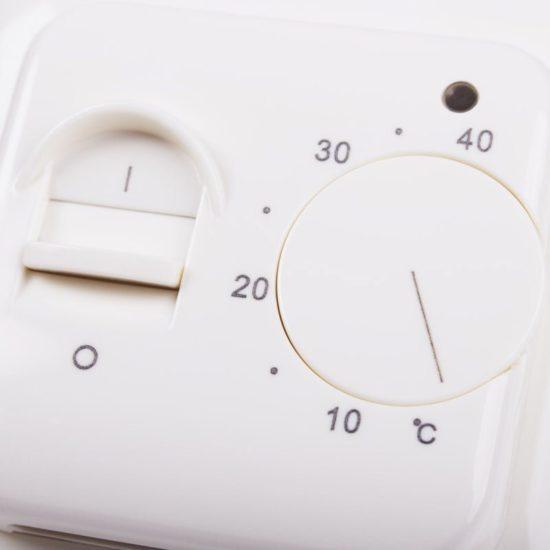
Compact mechanical wired thermostat with simple control. The switch works smoothly, which allows you to change the degree of heating by one division. The housing is equipped with a system on indicator. The device is mounted in a junction box.
Device Specifications:
- setting within +5 - +35 degrees;
- power - 3500 W;
- Warranty period - 1 year.
Nest Learning Thermostat 3.0
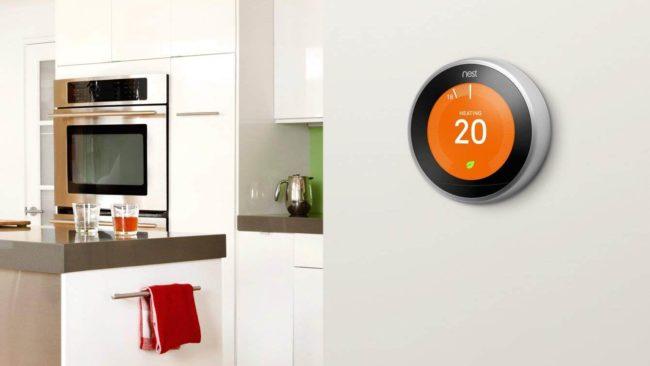
Nest Learning Thermostat 3.0
This model is the third generation of this type. Outwardly, it is no different, only it has a larger disk size and a higher resolution (320x320 pixels).
The device is equipped with a large display and new functions:
- autoschedule;
- programming;
- auto shutdown;
- notification in case of violation of the regime.
Management is simple, perhaps a smartphone via the Internet. The installation is also quite simple. Warranty - 2 years.
The only downside is the high price.
Menred RTC 70.26
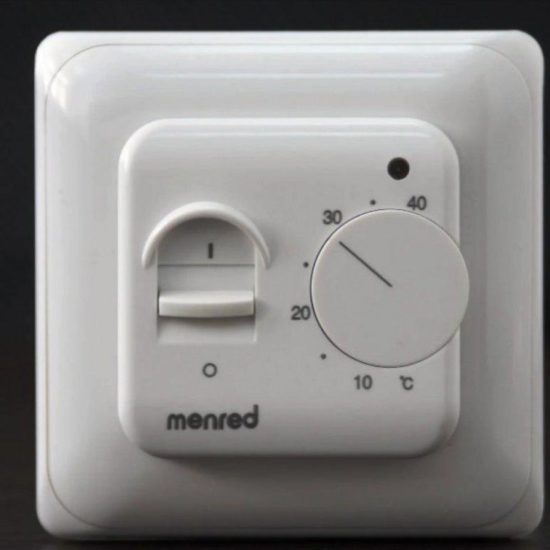

Inexpensive thermostat for electric floors of a mechanical type with hidden installation and a remote sensor. Wired control, with the ability to regulate floor heating.
Characteristics:
- Maximum load - 3600 W;
- temperature limit - from ++5 to 40 degrees;
- warranty - 3 years.
The thermostat is equipped with a light indication. Installation of the device is simple, it is installed in a mounting box.
Grand Meyer HW500
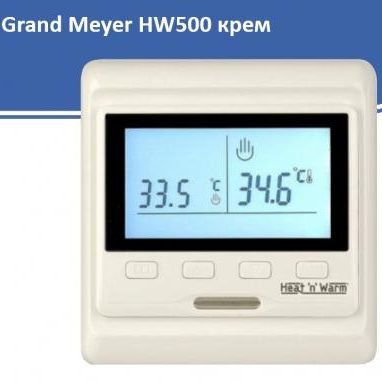
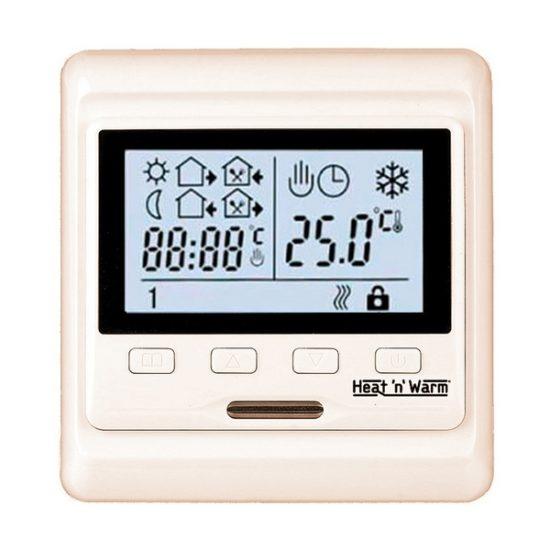
Universal inexpensive electronic model of programmable type. Operated by buttons, their blocking is possible. Has several modes.Equipped with thermal sensors - built-in and wired.
Specifications:
- operating temperature fluctuations - from + 5 to + 35;
- power 3600 W;
- communication current 16 Amp;
- warranty period 2 years.
The disadvantages of this model include clicks when turned on and the lack of blocking when the mode is on.
Electrolux ETA-16
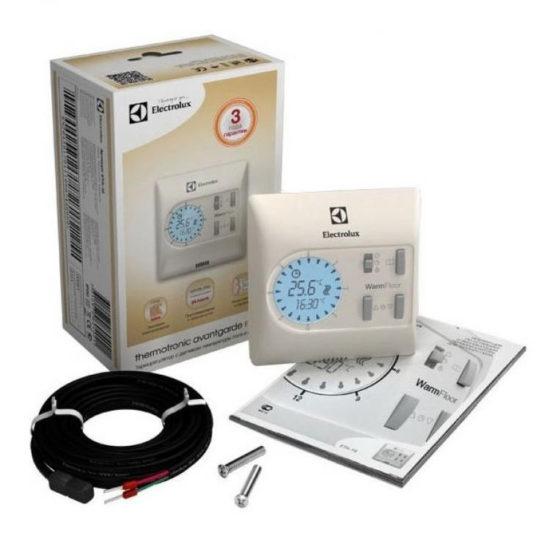

A device with a small display and a minimum number of icons. The screen glows brightly, lights up when you touch any button. The interface is clear, it is easy for them to set the regulator to turn off, set and maintain heating at a given level. The device is equipped with a temperature sensor.
Characteristics:
- temperature setting in the range from +5 to + 50 degrees;
- permissible power - 3500 W;
- warranty period - 3 years.
Caleo 520
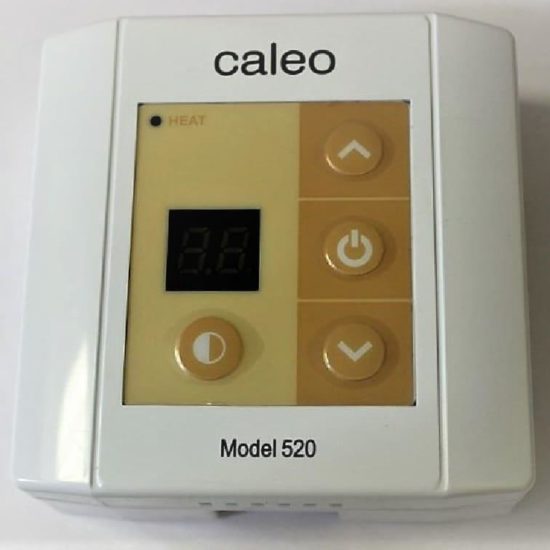
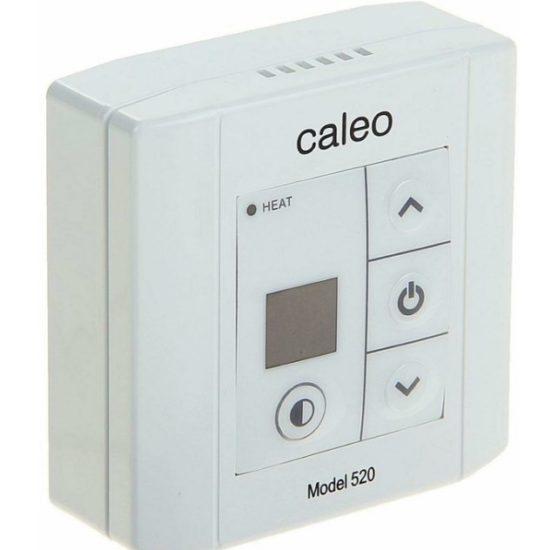
The laid on device with a control sensor. It has a backlit display showing the temperature. Equipped with a keypad lock function.
Main characteristics:
- temperature range from 0 to 40 degrees;
- warranty period - 2 years.
Advantages of the model:
- simple setup;
- ease of use;
- small power consumption;
- modern design;
- low price.
The disadvantages noted by users are relay clicking during operation.
Almac IMA-1.0

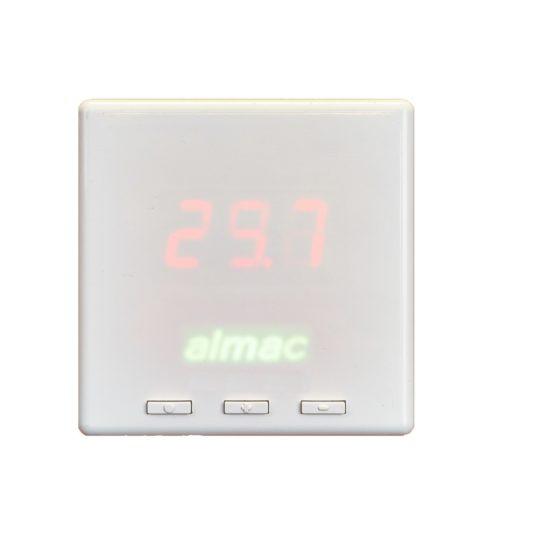
Modern, electronic, inexpensive device of high quality assembly. Equipped with thermal sensors - portable and built-in. A positive feature is the admissibility of adjusting the hysteresis, the lower and upper temperature limits are set with high accuracy.
Specifications:
- limiting temperatures - from -50 to +110 degrees;
- power - 3600 W;
- warranty - 1 year.
Installation rules
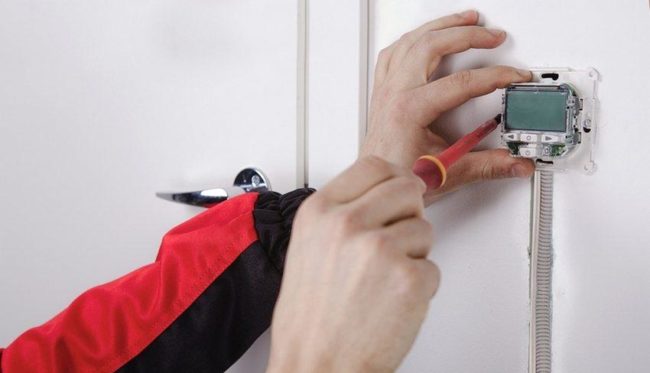
Features of installing a thermostat
The installation process of the thermostat does not differ in any difficulties, but the master needs minimal knowledge about the design of the devices. The installation location is determined based on the power of the heated floor and the device itself. The thermostat is located at a remote distance from the heating elements, otherwise when they are turned on, it will turn off the electrical circuit.
The device must be equipped with electrical cables and wiring for temperature sensors. To do this, appropriate grooves are made in the plate. In them, cables are laid on the electrical panel and on the floor. If the heating system is installed in a room with a high-quality interior finish, you can use suspension devices and bring cables to the walls in ducts. The connection of cables to the thermostat terminals must be carried out according to the diagram in the manual.
When installing and connecting, it is important to adhere to the following recommendations:
- it is desirable to place the regulator at a distance of 40-170 cm from the floor, unless otherwise indicated in the instructions. With a movable control panel, the main unit can be installed in any convenient place.
- The main functions of the floor sensor are to prevent overheating of the floor covering and ensure the comfort of the feet, but not to control the air temperature in the room.
- In humid environments, thermostats with appropriate water protection may be used.
- When embedding the device in a wall, a mounting box made of non-combustible materials is used.
- Cables from the controller to underfloor heating water heaters with a power of more than 1 kW must be laid in heat-resistant hollow pipes.
- The floor temperature sensor must be located between the heating elements at a distance of at least 50 cm from the walls.
- When first turned on, the device is set to the minimum operating temperature specified in the instructions.
- Installation of the thermostat begins after the final laying of the underfloor heating elements in order to correctly calculate the length of the wires.
- When filling the floor with mortar, the end of the pipe with the sensor must be well insulated.
- Before filling the heating elements, it is necessary to check the operation of all elements of the system.
- Heating mats must be grounded, and an RCD must be installed in front of the thermostat.
The sequence of actions when installing the thermostat:
- De-energize the installation site of the device. The underfloor heating wires must already be connected to the outlet. Remove the insulation from the floor wires - by 6 cm;
- Remove the thermostat top panel. To do this, insert a straight screwdriver into the groove from below.
- Connect the cable shields with a yellow-green wire, then put everything into the socket.
- After installing the sensor in the corrugation, pull one end into the socket box, and place the other between the heaters (floor panels with cable or infrared film).
- Connect the floor wires to the desired controller terminals according to the diagram;
- Gently bend the wires, insert the device into the socket;
- Install the frame and secure the top panel.
- The thermostat is connected, it remains to check its operation.
When installing a warm floor in conditions of high humidity, it is safer to place the thermostat in adjacent rooms.
Frequently asked Questions
It is possible with the correct calculation of power. But only one temperature sensor can be connected to one thermostat, which is installed in one zone or in one of the rooms. If the area of the room is large, uneven heating is possible.
Theoretically possible. But in this case, the owner will have to take over his functions as a thermostat and manually turn on / off the system when a comfortable temperature is reached. It is not recommended to use a “warm floor” without a thermostat also for reasons of energy saving.
The thermostat does not turn off because it does not reach the set heating mode. Most likely, the thermostat itself is faulty, to finally make sure that it is broken, set the maximum heating temperature. If in this case the device does not turn off, then it is definitely faulty and needs to be replaced.
Clicks are a sign of turning on / off the warm floor. If the thermostat “clicks” often, it means that when installing the heating, you installed the temperature sensor too close to the heating elements. The floor does not have time to heat up, and the sensor is already responding to temperature changes.
Theoretically, yes. The main thing is to correctly calculate the load. But consider the temperature difference in the air. Since there is 1 thermostat and it will have 1 sensor, which will be output to one room, and, accordingly, temperature control will be carried out on it. The second room may not warm up to the desired temperature. With this connection, it will not be possible to control the floor separately.
If frequent temperature changes are expected on the balcony, it is advisable to install a mechanical thermostat. It must have a remote sensor mounted in the floor.This configuration will provide maximum system efficiency.
This is possible if the actual floor temperature is higher than the temperature set on the thermostat. It is also possible that the temperature sensor does not work correctly.



